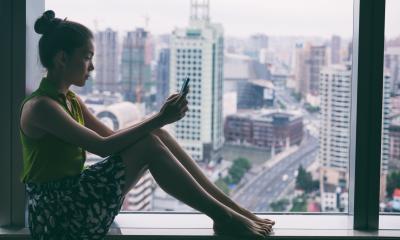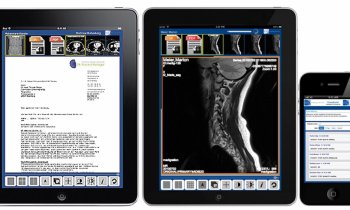News • Reducing hospital-related stress and anxiety
Website helps children and parents to prepare for hospitalization
Every year, millions of children around the world are admitted to hospital for having anaesthesia and surgery. Many of them experience preoperative anxiety which negatively affects both their hospital experience and medical outcome, as well as their future relationships with healthcare services from both a short-term and long-term point of view.
Image source: Anaesthesia Web
Unfortunately, hospital-related stress and anxiety among children and adolescents are often caused by a lack of preparation and understanding of the situation ahead. This despite the well-known fact that up to 60 percent of children show signs of severe anxiety when entering the operating room, Gunilla Lööf says, Nurse Anaesthetist and researcher at the Karolinska Institute in Stockholm, Sweden. With personal experiences of being forced to undergo medical procedures scared and unprepared as a child, Gunilla has spent much of her professional life preparing children and their parents for hospital stays.
In terms of impact, preoperative anxiety affects the child negatively in a short-term perspective with increased nervousness, pain and analgesic requirements during the hospital stay, but also from a long-term point of view with temper tantrums, sleeping difficulties, enuresis and food disorders, Gunilla says. Even though the frequency of negative behavior is limited and decreases over time for most children, almost 10 percent of them still suffer a year after the hospitalization. Unfortunately, lack of information, preparation and understanding cause significant stress and anxiety during hospitalization for both children and their parents. This despite strong evidence showing that making children and parents feel prepared is crucial in order to decrease distress and anxiety, to improve cooperation and participation, and to reduce negative consequences from both a short-term and long-term perspective.
Today, children and adolescents [...] declare the Internet as their primary source of information prior to contacts with healthcare and medical treatments
Gunilla Lööf
As a newly launched and internationally aimed website, the Anaesthesia Web offers children and parents help in order to prepare for hospital stays, anaesthesia and surgery. Today, children and adolescents have the unique experience of having been surrounded by digital media since birth. They use the Internet to play, search for information and learn new things. Furthermore, they declare the Internet as their primary source of information prior to contacts with healthcare and medical treatments. That is why we are here, Gunilla says. Research also shows that web-based preparation significantly increases knowledge and understanding in both children and parents compared to information offered as conventional brochure material.
The Anaesthesia Web is developed to be accessible to all children in terms of content, technology, pedagogy and language.The website offers children and adolescents information in an age-appropriate, interactive and playful way; simply in a way they can absorb and understand. There are videos, series, podcasts, blogs and FAQs. Visitors also get the opportunity to meet others with similar experiences. Perhaps you would like to join Doctor Safeweb or spy-scout Hilding Vilding? Or maybe visit the Clown Hospital, solve puzzles, do crafts, paint or play in your own operating room?

In addition to this, the website contains information for adults in 32 different languages. We know that fear and anxiety in children are greatly affected by the condition of their relatives. Therefore, it is incredibly important that family members feel well-informed and comfortable with the situation in order to be able to support their child in the best way possible, Gunilla emphasizes. All content on the Anaesthesia Web is based on clinical and scientific evidence and has been developed by a multidisciplinary team together with children of all ages, all with various experiences of healthcare. The Anaesthesia Web has open access, is free to link, and as all the content on the site is generally applicable it can be used irrespective of national or local procedures.
The purpose of web-based preparation programs is never to replace, but to support children’s information and preparation as well as their contact with healthcare providers, Gunilla says. More time will be available for individual interactions since the preparation has already started before the child has arrived at the hospital. After all, I know what it means to be afraid in hospital. There is no doubt that healthcare encounters have an impact on children and parents. The question is, what kind of impact do we want it to be?
Source: Anaesthesia Web / Karolinska University Hospital
16.04.2021









